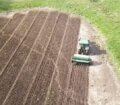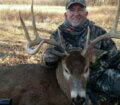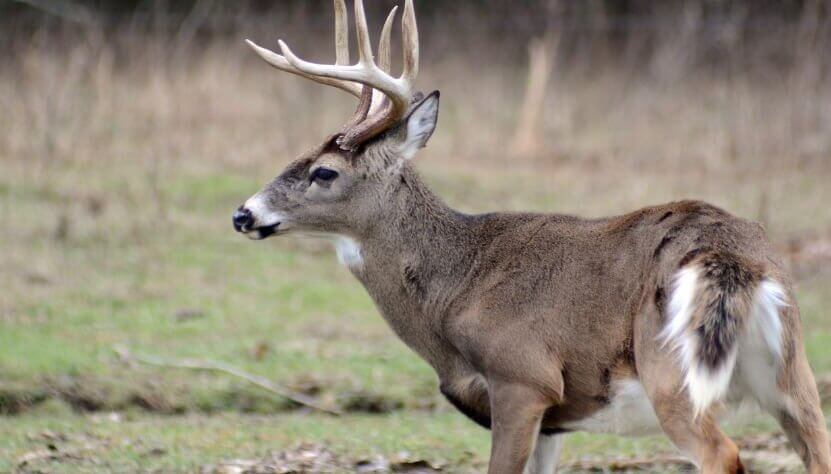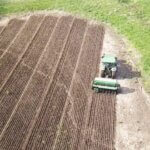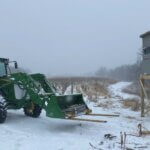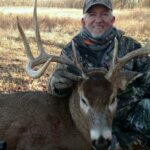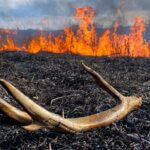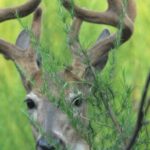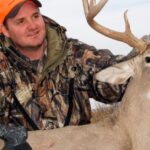Editor’s Note: Terry and Mark Drury have owned Drury Outdoors for the last almost 35 years, and today produce and direct several TV shows, including “Thirteen,” “Natural Born,” “Bow Madness” and “Critical Mass: Evolve.” They’ve consistently been able to take older-age-class bucks every year on the properties they own and manage for wildlife. Terry Drury shares their deer strategies. Also many states offer free assistance through biologists in the states’ Technical Assistance Units about improving properties for deer.
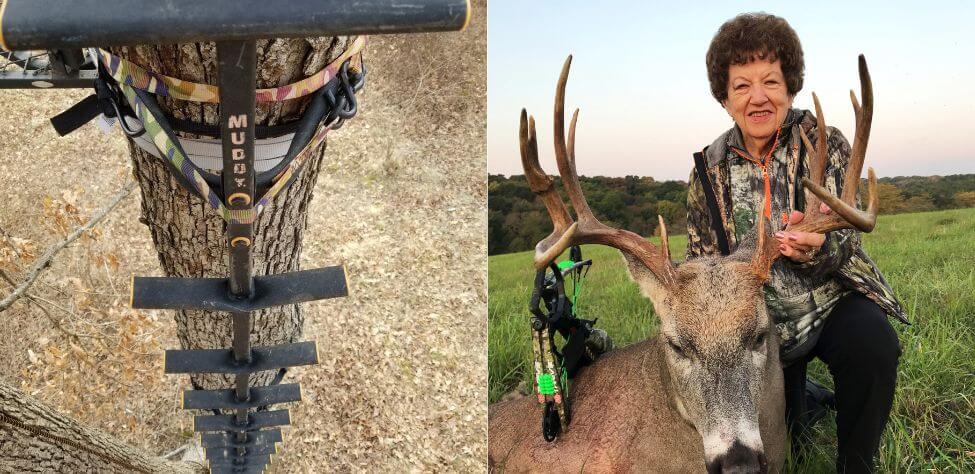
One question I’m always asked is, “How many trail cameras do you put out on each acreage that you own or hunt?” On a 10-acre parcel, we’ll have one or possibly two cameras, depending on the pictures of the deer that we get from those cameras. For instance, if I get pictures of a really- big deer on those 10 acres, I’ll add some more cameras to that area. Many hunters think that if they have one camera per 100 acres that they have a lot of cameras out and working for them. But we’ve learned that, in reality, one camera per 100 acres isn’t enough to be able to keep up with deer movement on your property.
Instead, having four to five trail cameras per 100 acres is really helpful in learning how to pattern bucks each season. We’ve also learned that the number of trail cameras you have out has a direct correlation to the number of nice bucks you’ll find on your land. I look at trail cameras like I view shed hunting: the more people we have hunting sheds on our property, the more sheds we’ll find. The more cameras you use on your property, the more bucks you’ll pinpoint.
I believe one of the most-important times to use trail cameras is just before or during the very-early deer season. At that time of the year when the weather is generally hot, deer usually will bed-down in the shade, get up and go to their feed and then return and bed-down in about the same place where they’ve been bedded earlier. They will move more if their bedding area is closer to water in the early season when the air temperature is high, and the need for water is greatest. Again, a good rule of thumb – if you really want to find the bucks on your property with trail cameras – is to use four – five trail cameras per 100 acres.
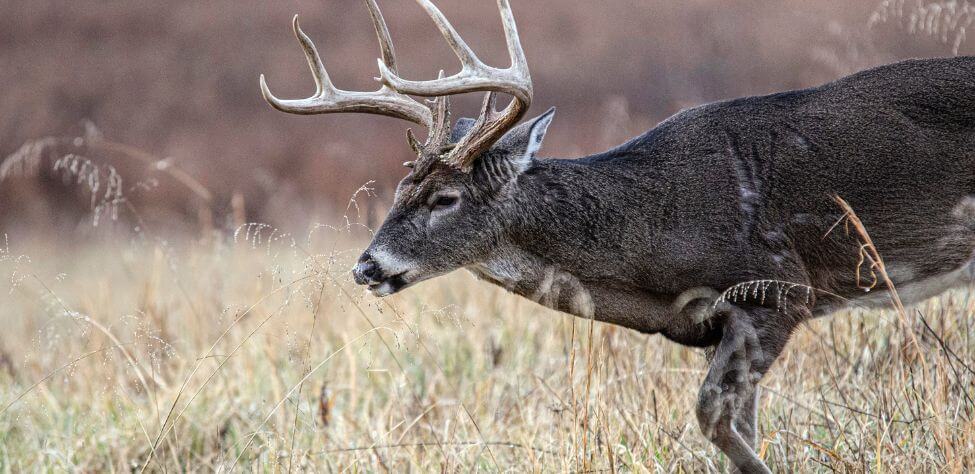
Our bow season in Missouri arrives on September 15, and the week before the season, we spend a lot of time studying the trail-camera pictures taken on the properties we hunt. Many deer in our area are still in the velvet during September, and bucks usually start going into hard antler during the month of September. That’s not true nationwide. As a general rule, the last week of August and the first week of September are the weeks that deer start rubbing the velvet off their antlers in our section of the state. This time is when we really start studying our trail-camera pictures to try to identify the bucks that we didn’t want to take last season and see what their antlers look like for the upcoming season. We want to find out where they’re living and to pattern them.
Another thing we’ve observed over the years is that just before bow season starts in our area, bucks begin moving around quite a bit. They’ll move from their summer pattern toward their fall and winter patterns. That means bucks you may have been keeping-up with all summer long will seem to vanish, and bucks you don’t have any trail-camera pictures of previously will start showing-up on your trail cameras during this time. We’ll start picking out the bucks we want to take for the coming season. We identify where those bucks are living and moving and decide whether we should let a buck go and grow another season or attempt to take him in the upcoming season. We’re simultaneously determining what wind direction we need to have, and where we should place our stands, or whether we can hunt from stands that we already have up.
Use What You’ve Learned from Trail Cameras to Set-Up Your Deer Season
Mark and I both start a lot of strategizing to determine: which bucks we’ll attempt to take during early season; how we’ll reach a place without that buck seeing or smelling us; and whether he’s going to be a buck we’ll hunt in the morning or in the afternoon.
On my property, I want to try to take my bucks at 4.5 years old or older. I’ve learned that many times a 4.5-year-old buck will have a really-nice rack that may score 150 – 160 inches. Now, having said that, we also know that most of the 4.5-year-old buck class will typically be in the mid-140-inch rack size. So, another characteristic that we’ll look for is the potential that 4.5-year-old buck may have to eventually produce a buck with a bigger body size and a bigger rack.
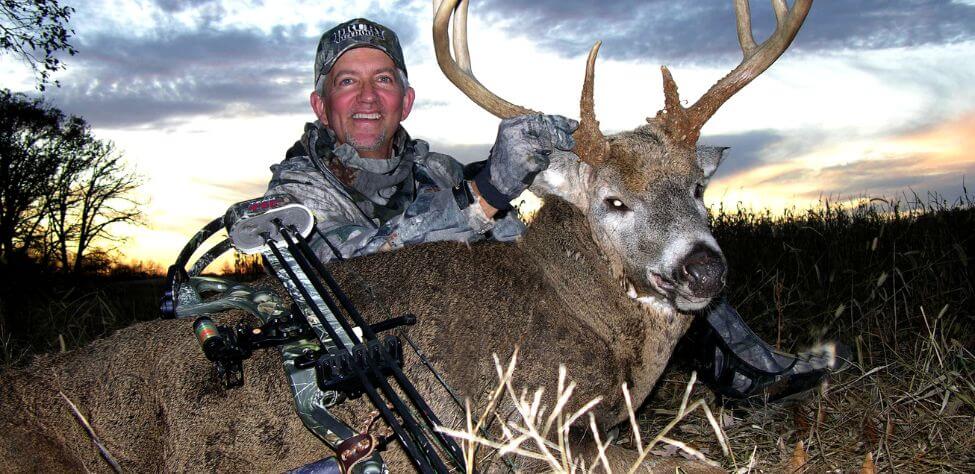
Now, I’ve noticed on my property, when a buck gets to be 5.5 years old, the sizes of their racks and their body weights tend to decrease, or their racks don’t grow much bigger than when they’ve been 4.5 years old. The two factors we believe result in that 5.5-year-old drop-off in rack and body size may be because of the distance 4.5 bucks must travel chasing estrous does during the rut, and the pecking order of the bucks in their home ranges. Bucks will disperse and move-out of their home ranges when a bigger, more-dominant buck is in their home range that’s breeding most of the does. A 4.5-year-old buck uses up a lot of energy, fat reserves and weight during the rut. We believe this may be part of the reason why the buck and his antlers usually stay about the same size at 5.5 years old as they’ve been at 4.5 years old.
Then when a buck gets to be a 6.5-year old, we’ve noticed that this seems to be the time when his body grows tremendously – as does his rack. When the buck’s 5.5, I believe his need to feed is greater than his need to breed. But when a buck reaches 6.5 years old, he narrows- down his home range and may become the dominant buck in that area. Mark and I have observed that 5.5- to 7.5-year-old bucks will have a much-smaller core area that they live in, compared to what their core areas were from 1.5 to 4.5 years old. From 6.5 to 7.5 years old, a buck will start concentrating on food supply and thick cover because eating more and surviving longer becomes more of his concern than chasing does all over the country. We like to try and harvest our bucks from 6.5 years old to 8.5 years old because we believe that’s when their body sizes and their antlers are the biggest. Our philosophy is that when you can allow a buck to survive until he’s 6.5 to 7.5 years old, that’s about the optimum age to try to take a trophy buck.
Tomorrow: What Amount of Land’s Needed to Hunt Deer

How to Hunt and Take Big Buck Deer on Small Properties
In this book, you’ll hear from 14 hunters who either have gained permission or leased properties as small as six acres to as much as 250 acres, and how they consistently take older-age-class bucks off these little lands.
VERSIONS: AUDIBLE, KINDLE & PRINT

Jim Crumley’s Secrets of Bowhunting Deer
Using a black magic marker and a gray work jumpsuit, Jim Crumley of Buchanan, Virginia, drastically changed the nature and purpose of hunting camouflage when he created the first sportsman’s camouflage – Trebark. Crumley’s love of bowhunting and his desire to be more invisible changed hunting clothing forever.
In this hunting guide, he shares the wisdom that he’s learned throughout his lifetime about how to be a hunter, how to find a deer lease, how to scout for deer, and more.
Special features include how to:
- Have a magic 60 acres to hunt
- Decide the best equipment to use
- Find deer year-round
- Locate land to hunt
- Know the best place to put your tree stand
- Get bucks within bow range
VERSIONS: AUDIBLE, KINDLE & PRINT

How to Hunt Deer Like a Pro
How do you know if the land you hunt has a trophy deer on it? Wildlife manager Bob Zaiglin, of Uvalde, Texas and Jim Crumley, the father of modern-day hunting camouflage, tells you how to find out. GPS can make finding and taking that trophy buck easier. This hunting guide will teach you how to hunt big bucks where no one else can find them, how to call deer, and how to become versatile as a deer hunter, so that if one deer tactic doesn’t work, another one will.
In the chapter, “How to find Bucks at Scrape,” Dr. Keith Causey, retired professor of Wildlife Science at Auburn University, describes the best way to hunt a scrape.
Brad Harrison of Neosho, Missouri, is a nationally-known videographer, professional deer hunter and master at calling deer. Another master is Will Primos of Primos Game Calls. These two experts will tell the best deer calls and when to use them in this book.
And for over 20 years, Bo Pitman, lodge manager of White Oak Plantation, has been studying deer movement patterns. He explains what types of conditions are best for predicting deer movement.
VERSIONS: AUDIBLE, KINDLE & PRINT

Deer hunting and deer hunters are drastically changing each year. To learn new techniques for hunting deer and have more places to hunt, I’ve interviewed some of the best deer hunters in the nation and share their tactics in How to Hunt Deer Like a Pro: Volume II.
In Chapter 10, Jacob Lamar tells you his tactics for consistently taking older-age-class bucks on public lands in several states. Chapter 11, Bob Walker explains how to find places on public lands where you can hunt that 99 percent of the other hunters never have considered hunting. The Bonus Chapter with David Ramey tells you how, where, when and with what equipment to take big Kansas bucks on public lands by hunting in 100-degree weather when others won’t hunt.
Chapter 13, Mark Drury, his family and his guests take mature bucks every season by having more small places to hunt rather than one large property. Drury explains the strategy of having satellite farms to hunt that only may be 50-150 acres each or less. Chapter 15, Pat Reeve, who hunts far-northern states and Canada, says, “I don’t like hunting for mature bucks until the weather is 20 degrees or less.” Chapter 4, Dr. Larry Marchinton says that funnels are the most-reliable stand sites to hunt for big bucks and tells why.
VERSIONS: AUDIBLE & PRINT

